#Journey to the West: Canopy Marshal
Explore tagged Tumblr posts
Text
Journey to the West: Canopy Marshal (2017) 西游记之天蓬元帅

Director: Zheng Hang Starring: Li Li / Yi Yafan Genre: Romance Country/Region of Production: Mainland China Duration: 90 minutes Also known as: Marshal Tianpeng of Journey to the West / 西游之天蓬元帅 / 西遊記之天蓬元帥 Type: Retelling
Summary:
According to legend, Tianpeng Zhenjun, the commander-in-chief of the Heavenly Court, was demoted to earth by the Jade Emperor for harressing Chang'e. However, by some strange combination of circumstances, he fell into a pig pen where piglets were being given birth and grew into a pig's face. He was helpless. On this occasion, the Star of Venus in the heaven came down to earth to guide Marshal Tianpeng, and also gave him a "wishes bracelet" and told him not to be obsessed with women, let alone fall in love with mortal women, otherwise he will suffer forever. Unable to return to heaven, with all kinds of curiosity and unknowns, Marshal Tianpeng's spiritual life began, with unprecedented twists and turns, stumblings, helplessness in the world, and the tragic ecology of life, until he met a sunny, kind and beautiful girl "Zi Ling." Marshal Tianpeng began to feel a little excited in his heart. The sudden decree of the Jade Emperor summoned Master Tianpeng to immediately return to Heaven to accept the new work order, which made him miserable. The decision deep in his heart had already been finalized. Whether to stay in the mortal world or to fulfill the Jade Emperor's will, the story begins! ! !
Source: https://en.hkcinema.ru/film/27606
Link: https://tv.sohu.com/item/MTIxMDU1NQ==.html?txid=7ada969851fd73090f44b01fee5b798c
#Journey to the West: Canopy Marshal#西游记之天蓬元帅#Marshal Tianpeng of Journey to the West#西游之天蓬元帅#西遊記之天蓬元帥#jttw movie#movie#live action#retelling#addition#zhu bajie#zhu bajie centered#jttw media
3 notes
·
View notes
Text
AMAZING and the contrast of SWK and Zhu Ganglie pre-JTTW with their current Journey selves are hilarious! Or just a could have been.
👉👈

#jttw#journey to the west#jttw zhubajie#rel'sart#jttw sun wukong#jttw marshal TianPeng#Tianpeng Marshal Canopy#zhuhou#jttw monkeyking#addition#zhu bajie
591 notes
·
View notes
Text
I've been clowning with the Western AU more and thought to give some background on Danny. I hope you enjoy! Comments and reblogs are greatly appreciated! - Cato

Daniel Roy "Danny" Gibson like in the original timeline, was born in West Virginia. He, his mother and brother Casey moved out west when their Grandpa Reggie purchased land. Just having escaped an unhappy, abusive marriage and seeking new opportunities, Rue collected all of the family savings and left with her two sons to the train station. She told young Danny and Casey "Life is full of one-way tickets. The wiser one knows to never take 'em for granted." What she meant is that once they boarded the train out of town, there was no going back. Life in West Virginia was beautiful, but harsh and unforgiving. There was little money and it was hard for Rue to find work, she aspired to be something more than a housewife and be a good role model for her kids, that they could be anything they set their sights to. Knowing that if she could escape her nasty husband, Rue knew that she should give it a chance. What Danny missed most about his old home was the nature, the godly sight of the sun's rays of shine working around every canopy and hillside to even the darkest parts of the forest. Thinking about it made him pretty emotional. Rue though reassured Danny that his grandpa personally had seen the "spectacle that was the desert in full bloom." Still it was hard for Danny to get over leaving the Appalachian mountains behind. But he knew things had to change. That was what he reflected on, now a Marshall, as he rode towards the town of Deadwood. Bound to meet friends he had never seen in years. Danny hoped that the reunion would be like how it was when he finally made it to his grandpa's land with his mom and brother. There were many years they had to make up, but the journey and the very thought would make it more than worthwhile. He hasn't seen his friends in years either since he became a lawman. Danny loves his job but he misses them dearly. One night on the journey to Deadwood, he dismounts his horse to sit down on the dry, sandy ground and watch the pretty spectacle that is the sun setting over the wide plain. A reminder of the great man his grandpa was and a sign of hope for things to come...
#danny gibson#old west au#western au#it lives in my mind rent free now ya hear?#oc background#hphl#hogwarts legacy mc#Hogwarts legacy
18 notes
·
View notes
Link
A well-to-do western suburb of Paris, Courbevoie is in touch with the center of the city but has an easy, residential feel.
There are some understated museums to check out, housed in pavilions that were made for the Exposition Universelle in 1878. Courbevoie also contains some of La Défense, the city’s modern banking district, so you won’t have to go far for dynamic urban architecture and France’s number one shopping mall. And despite being in the suburbs, you’ll also have lightning-quick journey times to the center of Paris on the Métro Line 1. For the sake of convenience, we’ll deal with the things you can do in the west of Paris first. Discover the best things to do in Courbevoie.
[toc]
1. Musée Roybet Fould
A forgotten piece of Paris history, the site of this museum is a wooden pavilion built by Norway and Sweden for the University Exhibition in 1878. It’s a fusion of the old and new, because it’s in a traditional Scandinavian-style house, while also standing as an early piece of prefab architecture.
The permanent internal displays are mostly from the time that the stall was built. And as the museum’s name suggests these entail paintings by Ferdinand Roybet and Consuelo Fould.
On it, there are paintings and sculptures by Jean-Baptiste Carpeaux, and lots of small curiosities from the 19th century, such as toys, dolls, postcards, and posters.
2. Pavillon des Indes
Also from the University Exhibition in 1878 was Pavillon des Indes. This enchanting pavilion was actually commissioned by Edward VII, then Prince of Wales, to represent British India at the show.
As with the Musée Roybet Fould, it was originally placed on the Champ de Mars in front of the Military Academy.
Both were relocated to the Corbevoie Gian Parc de Bécon in the 1880s, where the Pavilion des Indes are still protected as a monumental monument. After falling into disrepair, the pavilion was restored in 2013 and reopened as a studio and gallery for emerging young artists, along with a small exhibition about Courbevoie in Tertiary. Republic.
3. Parc de Bécon
These pavilions decorate the peaceful Parc de Bécon, which slopes down to the left bank of the Seine.
And there are a few other things to keep in mind: You can see the front of the Charras Barracks, the site of the Swiss Guards, mercenaries protecting the King from the 17th century to the Revolution and the famous massacre at the Tuileries Palace.
You can also ponder the memorial to the National hero Maréchal Leclerc who died in a plane crash in 1947 and was posthumously awarded the title Marshal of France. There’s a dreamy view of the river from the monument’s terrace.
4. Folie Saint James
On the right bank of the Seine is an interesting small souvenir from Ancien Régime. He gave the architect permission to do whatever he wanted, provided it was expensive! And the outlandish result is a miniature mountain in the center of the garden with rocks that would have been transported here at a huge cost.
At the foot is a Doric temple and pond, and inside there used to be a network of tunnels covered with glimmering crystals.
5. La Défense
Many of the high-income residents of Courbevoie, making a short commute to the modern business district of Paris right next door. La Défense came to life in the 1960s and grew over the next 30 years, adding the sort of futuristic skyscrapers that wouldn’t get planning permission in the center of Paris.
New record-breaking structures are in the pipeline, but for now, it’s a district to wander and get some photos of the eccentric architecture and sculptures. If there’s an emblem for La Défense it’s the Grande Arche, a hollow cube-shaped building on an axis with the Arc de Triomphe several kilometers to the southeast.
6. Jardin d’Acclimatation
By car or subway, you've earned a few minutes to get to this attraction on the northern peak of Bois de Boulogne. This is music to children’s ears as they’ll be treated to rollercoasters, fairground rides, a miniature train, mini-golf, and animal attractions.
The Jardin d’Acclimatation was opened by Napoleon III in 1860 and still has a traditional air about it: There are landscaped gardens, many of the buildings go back to the 19th century and a lot of the entertainment is old-school and innocent, so think pony rides and puppet shows.
7. Fondation Louis Vuitton
Also on your doorstep is one of the newest cultural attractions in the city, and it’s pretty hard to miss. The museum was designed by Frank Gehry, and despite only being here since 2014 has recently been transformed.
The vaulting canopies suspended over the main structure of the building have been given a multicolored makeover by the French conceptual artist Daniel Buren. The collection inside is enriched by works from the big names in contemporary art, like Gilbert & George, Jean-Michel Basquiat, and Jeff Coons.
There are also installations by the likes of Olafur Eliasson and Ellsworth Kelly, as well as a permanent show about the project to construct this striking building.
8. Château de Malmaison
Although you’ll be instinctively looking towards Paris for sightseeing, there’s also lots to see on the western outskirts. If the traffic is quiet, you can reach this prominent Royal palace in about ten minutes.
For a time at the start of the 19th century, the château even shared the seat of the French government with the Tuileries, while it was Napoleon’s final residence before he went into exile after the 100 Days.
The woman who will forever be linked with Malmaison is Joséphine de Beauharnais, the first wife of Napoleon. She lived at this property from 1799 up to her death in 1814 and invested huge amounts of cash on its grounds and interiors. There is an inside museum with intimate personal effects by Joséphine and Napoleon.
9. Église Saint-Pierre-Saint-Paul
And since you’re in the area you could also call in at this church close to the château. It’s fine if sober Renaissance building, but the attraction isn’t so much how it looks but the events that took place here and the memorials inside.
Joséphine died of pneumonia in 1814 and her funeral took place on June 2 of that year. Famous architects, Louis-Martin Berthault and sculptor Pierre Cartello collaborated on her tomb.
You can also see the stunning mausoleum of her daughter Hortense, who was the mother of Napoleon III who ruled France in the Second Empire and commissioned this monument.
10. Local Markets
There are four markets in the Courbevoie area, trading five days a week. Two of these, Marché Villebois Mareuil and Marché Charras are covered, while Marché Marceau and Marché du Faubourg de l KhanArche are open air.
All have butchers, bakers, confectioners, fishmongers, florists, the cheese stands and sell traditional artisan products. And they’re local institutions, preferred to supermarkets for a couple of reasons: First, what you buy comes straight from the farm, cutting out the middleman and making it fresher.
But also, the traders selling this product are experts and will give you tips on how to store and cook whatever you buy from them.
More ideals for you: Top 10 things to do in Cosenza
From : https://wikitopx.com/travel/top-10-things-to-do-in-courbevoie-708263.html
1 note
·
View note
Photo
SO PRETTY


Strangers in the throne room
Close-ups under the cut because I spent way too much time fancifying their outfits
Keep reading
#journey to the west#jttw#xiyouji#sun wukong#monkey king#zhu bajie#tianpengyuanshuai#marshal canopy#sha wujing#juanliandajiang#curtain lifting general#bai longma#bai yulong#ao lie#JTTW: Like 80% of this 2000+ pg story is about the actual journey to nirvana | Me: but what about before the journey tho#as the day school starts up again approaches...... I get more and more incredibly stressed out about starting ap studio art......#im cramming in last minute stress-free illustrations#Ao Lie- Third Crown Prince of the Western Sea: *accompanying his father the dragon king on a meeting w/ the Jade Emperor*#Ao Lie: *hoity toity and being personally escorted by the Marshal Canopy* Why is there a monkey loose in the throne room#Marshal Canopy: Watch your tongue- it's the Great Sage Equal to Heaven. He outranks you#Ao Lie:#Ao Lie: excuse me?#readmore +#addition
168 notes
·
View notes
Link
Introduction
A rainforest paradise, Guyana has prioritized ecotourism as a major component of its economy in recent years. Many of Guyana’s offerings hang on the inherent beauty of its natural attractions—an opportunity to experience nature in its raw, primitive state rather than sanitized packaged excursions.
While other Caribbean islands cater to surf and sand, Guyana’s strength lies in its biodiversity. You might find yourself paddling down one of the country’s 32 major rivers and come face to face with a colorful toucan, or be on the open savannah and spy giant anteaters at dawn. Maybe you’ll spot a jaguar while walking in the rainforest—which covers 77% of the country—or be lucky enough to steer a pontoon down waterfall rapids.
It’s not for everyone, but if you take the chance, you won’t be let down.
Guyana Tourism Authority
For the most part, tourism remains run by local people who know the area well in Guyana. To help facilitate further development, the government created the Guyana Tourism Authority in 2002 to raise awareness of tourism in the country as well as ensure that such activities remain sustainable and environmentally sound.
The Guyana Tourism Authority began major initiatives to promote ecotourism in 2012. That year, the Rupununi Region won the Caribbean Excellence in Sustainable Tourism Award.
A program of quality of service improvement has been instituted in the country to help standardize service. Part of this program involves a carbon credit system that asks richer economies to offset the damage caused by gold and diamond mining, so as to preserve the Guyanese rainforest.
Attractions
Guyana’s attractions are delightful but come with the caveat that things might not always run as smoothly. Transportation remains an issue. Sites in the wild can be reached by boat or air, but the last miles cater more to the rugged adventurer.
Still, with the help of tour operators based both in the U.S. and Georgetown, visiting Guyana’s unspoiled land is an opportunity to experience nature in its full glory.
More attractions exist than the following listed, but these are the most developed, popular, and concentrated on at present:
Kaieteur Falls: The world’s largest single drop waterfall, Kaieteur Falls is one of Guyana’s greatest scenic treasures. Mist rises to the top to create a cloud forest that’s home to a diverse biohabitat. Swift birds come back to nest at sunset under the immense curtain of water, making the falls appear even more magical, and tiny golden frogs can be found throughout. An absence of guardrails makes the view even more breathtaking.
Rupununi Region: Known as the Serengeti of South America, the Rupununi’s abundant fish, a variety of wildlife, and bird-watching have led to the development of ecolodges in this region rich with Amerindian heritage. The savannah’s vast woodlands and grasslands contrast with the Kanuku Mountains, across the Rupuni River, which has a diverse bird and mammal population. There are also many trails that have been developed for tourist use.
Mainstay Lake: A journey through roads, rivers, and a floating bridge will lead you to a protected swimming area on a white sand beach, a resort featuring a restaurant with indigenous Guyanese dishes, and a large variety of water sports. Nearby is the Amerindian village of Whayaka, where pineapple farming is common.
Shell Beach: For 90 miles on the northwestern shore between Pomeroon and Waini Rivers exists a beach literally made of tiny shells. In March and July, four sea turtle species come and nest, lay eggs, and take their young back to the ocean.
Bartica and Marshall Falls: The city of Bartica advertises itself as a “Wild West” atmosphere as it serves as a gateway to the interior rainforest where gold and diamond mining is the norm. Nearby Bartica is Marshall Falls, where a speedboat can plunge you swiftly into water rapids surrounded by jungle.
Iwokrama: The Iwokrama Rainforest is home to 800+ species of birds and is considered one of South America’s birdwatching hotspots. A lodge located on the Essequibo River provides many opportunities for water activities, and the Canopy Walkway 30 meters high in the treetops gives you a unique vantage point of the birds and mammals in the area. Currently, three conservation projects are underway in Iwokrama that attract researchers from all over the world.
Impact
With expenditures accounting for an estimated 3.2% of Guyana’s GDP and 8,300 jobs generated so far, tourism drives improvement of the country’s infrastructure. However, constraints still exist.
The lack of development has preserved the attractions and rainforest, yet there’s room for modern ecotourism amenities. For example, most tourists come from the U.S. by air. Possibly adding cruise ships to ports as a stop in the Caribbean may be a way to build tourism income. Most tourists stay in private houses since hotel capacity is limited.
Additionally, more training is needed for staff already in place. Professional marketing campaigns rarely exist. Some ecotourism operations aren’t seen as legitimate. (Guyana, as a country, for one, is still awaiting international certification from The International Ecotourism Society.) All of this can be good opportunities for investors. The future of ecotourism depends on funding, as well as good policy, to sustain it.
What’s more, partnerships between government, the private sector, and universities would also make for a thriving ecotourism industry.
Guyana REDD + Investment Fund and Norway Partnership
One partnership underway is the agreement between Guyana and Norway. Norway financially supports Guyana in its REDD (reducing emissions from deforestation and degradation) project.
As reported by the Rainforest Alliance and Paris Climate Agreement of 2015, Guyana becomes compensated financially for maintaining its rainforest. This agreement has improved governance of preserving the rainforest while supporting low deforestation, in turn funneling Guyana’s economy to tourism.
The project is implemented by the World Bank and the Inter-American Development Bank as part of the UN Development Programme. A global project, it could serve as a pilot program for other South American countries.
0 notes
Text
Notebook-1
Name: Wanxue Yang
Object: Journey to The West
Journey to The West is a book written in 16th century in Ming dynasty by Wu Cheng’en. It is one of the four great classic Chinese novels, which is still well-known to Chinese people nowadays. The main story of the Journey to the West is about the adventure of a Buddhist monk, Xuanzang in Tang dynasty with his three disciples protecting him to bring back the Buddhist scriptures from the West, the Leiyin Temple on Vulture Peak in India. The book was based on a true story of a Buddhist monk named Xuanzang in Tang dynasty. In order to translate the Buddhist scriptures more precisely, Xuanzang traveled from Chang’an in 629 and arrived in India in 630 via Kyrgyzstan, Uzbekistan and Afghanistan, he then studied in India for 13 years and came back to Chang’an in 646 (the route is shown in map on the right). Later he recorded his journey in the book Great Tang Records on the West Region.
Xuanzang’s three disciples, Sun Wukong also known as Monkey King, Zhu Wuneng or Zhu Bajie, and Sha Wujing or Monk Sha were characters added by the author of Journey to the West. All three disciples of Xuanzang were punished by the Jade Emperor who governs the heaven or Gautama Buddha for their sins and expelled from the heaven. Their missions were protecting Xuanzang to successfully arrive in Leiyin Temple and bring the Buddhist scriptures back to the heaven so that they can become immortal and go back to heaven again. All three disciples in the book had original models. Bajie was Tianpengyuanshuai, the marshal canopy, who is originated from Daoism and Chinese mythical stories in Ming Dynasty, and he was punished because he was lured by the beauty of the Goodness of the Moon, he was expelled from the heaven and turned into a human-eating pig monster. Monk Sha was originated from Monk Huili in the 7th century from Xuanzang’s biography. Monkey King was originated from folk stories in Song Dynasty , he was born from a stone with the nutrient of the Five Elements(metal, wood, water, fire, soil) and learned Taoism as he grew up. Monkey King was the strongest and the most rebel one among all three disciples. He had fought with Tianpengyuansuai and more than one hundred thousand celestial soldiers in the heaven and won, nobody can stop him havocking the heaven until the Gautama Buddha imprisoned him under a mountain for five hundred years and Xuanzang freed him from the imprison. Monkey King was actually the name Sun Wukong used when he was the monster monkey, after he released by Xuanzang, he was given by a new name, Wukong and after he brought back the Buddhist manuscripts, he became the immortal Victorious Fighting Buddha.
In different dynasties, people interpreted this book differently, and considering the People’s Republic of China as a different nation from the ancient dynasties, there are many varies versions of media adaptations, and people from the PRC and people from ancient China focus on different plots in the story, because they value the stories differently. Ancient Chinese Dynasties was an empire established based on Confucian and Legalist, so that characters like Monkey King must be yield to the heaven in the end of story. Yet after the second world war, an animation of Monkey King havoc the heaven attracted and motivated lots of people, because of the rebellion of the Monkey King reflects people’s desire at that time.
0 notes
Text
Monkey King: Hero Is Back (2015) 西游记之大圣归来
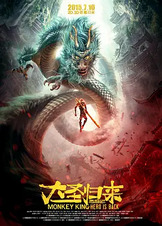





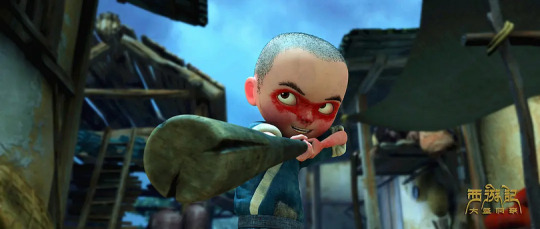




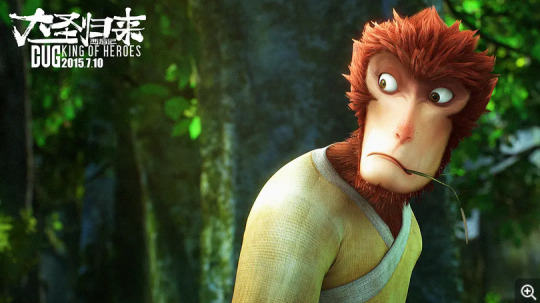
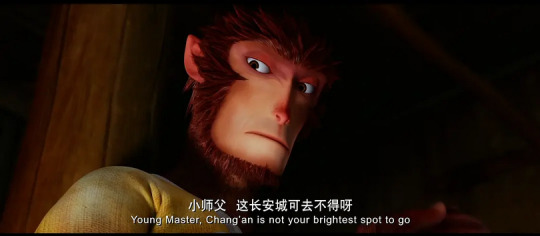



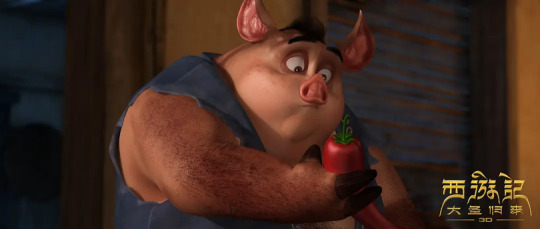
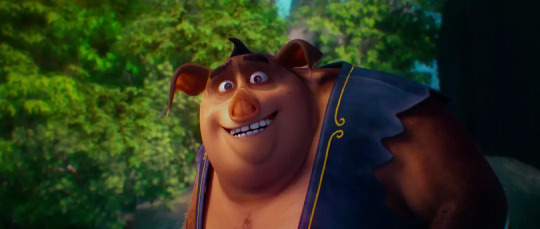
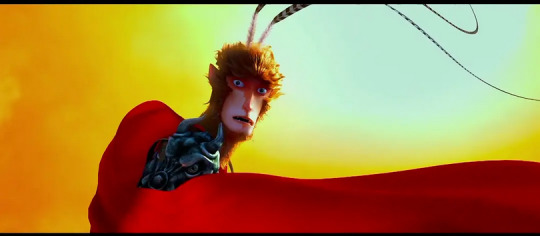






Director: Tian Xiaopeng Screenwriter: Tian Xiaopeng / Liu Hu / Mi Li / Jin Ran / Jin Cheng Starring: Zhang Lei / Lin Zijie / Wu Wenlun / Tong Zirong / Liu Jiurong / Wu Di / Liu Beichen / Zhao Qianjing / Zhou Shuai Genre: Drama / Animation / Fantasy Country/Region of Production: Mainland China Language: Mandarin Chinese / Cantonese Date: 2015-07-10 (Mainland China) Duration: 89 minutes Also known as: Return of the Monkey King / Monkey King /Journey to the West 3D / CUG: King of Heroes / 西遊記之大聖歸來 / 大圣归来 / 猴王 / 西游记3D IMDb: tt4644382 Type: Retelling
Summary:
The all-powerful Monkey King, Sun Wukong, is imprisoned by the Buddha within an ice cage deep within the mountains for rebelling against heaven.
500 years later, Mountain Trolls attack a group of travelers, all except for a baby boy named Liuer are killed, and Liuer is adopted by a monk after floating down a river in a basket. (The name Jiang Liuer means River Flow Child.) Several years later, the same trolls invade a small village and kidnap 49 young children. Liuer saves one of the baby girls and is chased by the trolls for doing so. He stumbles into the cave where the Monkey King was imprisoned, and unknowingly releases him from his curse. Sun Wukong defeats the trolls, although he is only able to use physical attacks, since a remnant of Buddha's seal prevents him from regaining his magical powers, causing him pain whenever he tries to harness his magic.
Wukong attempts to break the Buddha's seal to no avail. Liuer and the girl enthusiastically greet Wukong, not knowing he has lost his powers, and pester him with endless questions. (One example is when Liuer asks if the god Nezha is a boy or a girl. Wukong answers, a girl.) Annoyed, Wukong attempts to avoid the two, but is unable to evade them. A stone monster, created by the Buddha to keep Wukong imprisoned, attacks the three. Liuer manages to undo the spell on the monster, but falls off a cliff in the process. When he awakes, he finds out Wukong has saved him.
The three come upon Bajie, the Heavenly Immortal "Tian Peng Yuan Shuai" (Marshal of Heavenly Canopy) that Wukong defeated when he rebelled against Heaven 500 years ago, now reincarnated into a pig demon. Though Wukong is again hesitant, Bajie joins the group as well. They also run into a white dragon that attacks them and tries to eat Liuer but Sun Wukong scares it off. (This also happened in the original canon, although unlike in the original books, the dragon does not turn into a white horse.)
They stay overnight at an inn, but its owners turn out to be Trolls in disguise, who try to kidnap the baby. More trolls arrive and Wukong fights them off. The leader of the monsters, Hun Dun, appears, defeating Wukong and capturing the girl. After Wukong refuses to pursue them, Liuer goes ahead to save them on his own.
Hun Dun reveals his plan to sacrifice all the children they have kidnapped in order to gain magical powers. Liuer meets with his mentor, Fa Ming, to try to rescue them but nearly get captured. Wukong finds a doll of himself that Liuer had and realises how important of a figure he is. He and Bajie go to help Liuer. Saving Liuer and the 49 children, Wukong defeats the monsters. However, a solar eclipse occurs, and Hun Dun turns into a giant monstrous beast. Liuer is seemingly crushed by the rubble from Hun Dun's rampage. Upon seeing the boy's apparent death, Sun Wukong is devastated. Full of fury, he forcibly breaks Buddha's Seal, regaining his original supernatural powers, and easily defeats Hun Dun.
The final part of this movie connects to the themes in the original canon. Sun Wukong only regains his powers when he fights for someone else rather than himself, as Sun Wukong's powers are meant to protect the monk Xuanzang/TangSeng/Tang Sanzang against evil and lead the monk to enlightenment. Sun Wukong as a character is also meant to represent an enlightened mind, which is why Sun Wukong's staff emerges from his head. Jiang Liuer himself is the younger Xuanzang, since he only received the name Xuanzang after he was ordained.
In the end, Liuer is shown to have survived Hun Dun's rampage, and they return the abducted children to their families.
Source: https://movie.douban.com/subject/26277313/
Link: https://ww16.0123movie.net/movie/monkey-king-hero-is-back-6781.html
#Monkey King: Hero Is Back#西游记之大圣归来#Return of the Monkey King#Monkey King#Journey to the West 3D#Monkey King: Hero is Back#CUG: King of Heroes#西遊記之大聖歸來#大圣归来#猴王#西游记3D#jttw media#jttw movie#movie#animation#cgi#retelling#addition#sun wukong#zhu bajie#demon king of havoc#demon king of chaos#tang sanzang#jiang liuer
26 notes
·
View notes
Text
The Monkey King Conquers the Demon (1985) 金猴降妖

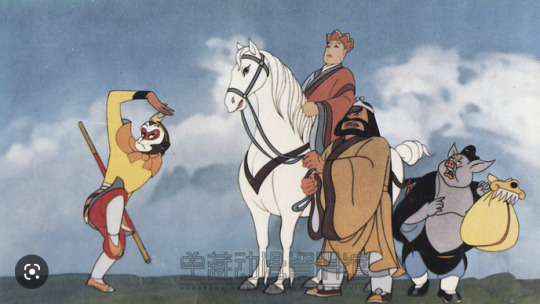
Director: Te Wei / Yan Dingxian / Lin Wenxiao
Screenwriter: Te Wei / Bao Lei
Starring: Li Yang / Tan Pengfei / Hong Rong / Wu Lusheng / Chariot / more...
Genre: Drama / Animation / Fantasy
Country/Region of Production: Mainland China
Language: Mandarin Chinese
Date: 1985 (Mainland China)
Duration: 90 minutes / 125 minutes (TV version)
Also known as: The Golden Monkey Conquers the Demon
IMDb: tt2572208
Type: Retelling
Summary:
It is said that Sun Wukong, Great Sage Equally Heaven, Zhu Bajie, the Canopy Marshal, and Monk Sha, Rolling Curtain General, protect Tang Monk from the west to learn Buddhist scriptures. After going through a lot of hardships along the way, they subdue countless demons and ghosts. On this day, the four masters and apprentices came to a barren mountain.
At this time, a young village girl came forward to ask for help, and Sun Wukong recognized with piercing eyes that it was the monster Bone Demon, and beat her away. However, Tang Sanzang, with his naked mortal eyes, blamed Wukong for harming his life, and Zhu Bajie fanned the flames, chanting the mantra so tightly that Monkey King was in unbearable pain.
After that, the White Bone Essence turned into a child and an old man to trick him, but Wukong saw them all and beat them away. Tang Seng was so angry that he drove away Wukong in a fit of anger, and thus fell into the trick of the monster...
This film is adapted from the story in the classic classic "Journey to the West", and won the 1986 China Film Golden Rooster Award for Best Animation Film; The 1985 Excellent Film Award of the Ministry of Radio, Film and Television; In 1987, he won the feature film award and the popular award at the Youth Animation Film Festival of the French Burpolas Cultural Club; 1989 Chicago International Children's Film Festival Animation Feature Film First Prize.
Source: http://chinesemov.com/1985/The-Monkey-King-Conquers-the-Demon.html
Link: https://www.youtube.com/watch?v=zmLXmXVx7Oo&ab_channel=HappyAcademy
#The Monkey King Conquers the Demon#金猴降妖#The Golden Monkey Conquers the Demon#jttw#jttw media#movie#animation#retelling#jttw movie#white bone spirit#white bone demon#nine tail fox#nine tail fox spirit#nine tail fox demon#sun wukong#zhu bajie#sha wujing#Tang Sanzang#monk tripitaka#rewrite
15 notes
·
View notes
Text
Marshal Canopy Returns (2018) 西游之天蓬归来
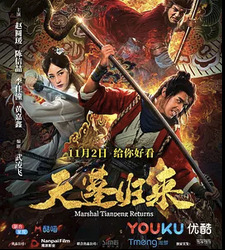
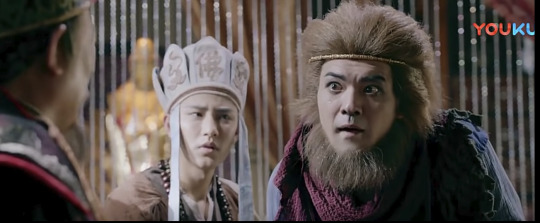
Director: Fang Xiaogang
Screenwriter: Wu Lingfei
Starring: Zhao Yuanyuan / Chen Xinzhe / Huang Jiaxin / Li Jiatong
Genre: Comedy / Romance / Fantasy / Costume
Country/Region of Production: Mainland China
Language: Mandarin Chinese
Date: 2018-10-30 (Mainland China)
Duration: 100 minutes
Also known as: Journey to the West: Return of the Canopy
Type: Retelling
Summary:
The film tells the story of Gao Cuilan, in order to comply with the orders of her parents, she cooperated in organizing a marriage recruitment conference. But everything went wrong, not only did she not get married, but she became the laughing stock of Gao Laozhuang. Mr. Gao tried his best to direct and act as the king of the mountain to snatch the marriage. On the road, she encountered Zhu Gangman by accident, and he sent Gao Cuilan back to the Gao’s house by mistake. Afterwards, a series of love-hate entanglements occurred between Gao Cuilan and Zhu Gangman. In the end, Tang Seng and others "conquered" him as a disciple in Gao Laozhuang, and went to the West to learn Buddhist scriptures together.
Source: https://chinesemov.com/2018/Marshal-Canopy-Returns
Link: https://youtu.be/9ioLottTuQk
#Marshal Canopy Returns#西游之天蓬归来#天蓬归来#jttw media#jttw#jttw movie#movie#live action#retelling#zhu bajie centered#zhu bajie#sun wukong#Gao Cuilan#Tang Sanzang#monk tripitaka#Jade Rabbit#Black Wind Demon#Yellow Wind Demon#lady gao#gaunyin#White Face Man#Scholar#rewrite
4 notes
·
View notes
Text
Monkey King and Million Demons City (2018) 齐天大圣·万妖之城
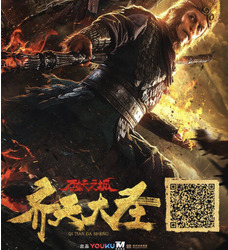

Director: Xiang Qiuliang / Xiang Hesheng
Screenwriter: Xiang Qiuliang / Xiang Hesheng
Starring: Chen Haomin / Lin Zicong / Fan Meng / Zhao Ziluo / Wang Hongqian / Li Jiaying / Luo Yingjun / Li Pingan
Genre: Fantasy / Adventure / Costume
Country/Region of Production: Mainland China
Language: Mandarin Chinese
Date: 2018-03-02 (Mainland China)
Duration: 90 minutes
Also known as: Monkey King, City of Ten Thousand Monsters
IMDb: tt9726522
Type: Retelling
Summary:
"A stick becomes a Buddha, but an unintentional one becomes a demon." The Golden Cicada’s Ninth life traveled westward and was buried in Liusha River. He retain obsession and got rid of the heart, transforming into a demon, which is called Wuxin. On his 10th life, Xuanzang got the stone monkey and the canopy marshall escorted to learn Buddhist scriptures, and flowed sand again...
The story of "The Great Sage Equaling Heaven: City of Demons" is based on Journey to the West. Always alone, facing the twists and turns and hardships along the way alone, with great righteousness in mind, yearning for the salvation of all living beings and the kindness in the world. Needless to say how difficult the journey is, but the real resistance is always directed at the heart.
The shadow on the back of the sun always remains. When the edge of good and evil begins to blur, when innocence and beauty are trampled, even if you are powerful, you will be helpless and fall into a desperate situation. However, brave people will still create light in the darkest corners, even if they are in prison, they will not give up the struggle. Knowing that he must sacrifice, but still willingly.
Stick with heart, only struggle can create hope. Although justice will eventually defeat evil, when you find that good and evil come from yourself, if you start to hesitate, please don't forget the original pure heart, fight and work hard for it. Don't forget the original intention, only then can we always succeed.
Source: http://chinesemov.com/2018/Million-Demons-City.html
Link: https://www.youtube.com/watch?v=pNIRHvS2bLM&ab_channel=YOUKUMOVIE
#Monkey King and Million Demons City#齐天大圣·万妖之城#jttw#jttw media#jttw movie#movie#live action#Retelling#sun wukong centered#sun wukong#zhu bajie#Flower Demon#Tang Sanzang#monk tripitaka#sha wujing#Purple Potato Demon#addition
3 notes
·
View notes
Photo
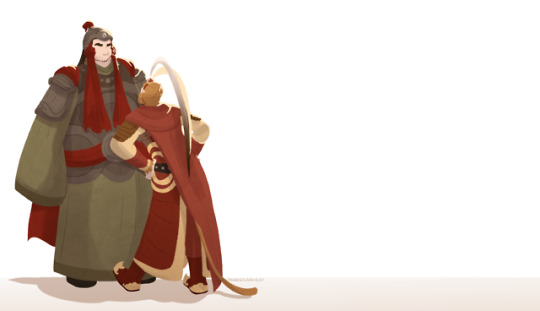
“Hey, officer.”
#my art#journey to the west#jttw#xiyouji#sun wukong#zhu bajie#tianpengyuanshuai#marshal canopy#猪猴#zhuhou#is there a separate ship name for pre-fall bajie?#also maybe at this point i should make my pre-journey wukong adult by default#or just for future reference assume whenever i post anything remotely romantic involving pre-jouney wukong its not my default wukong#like this and the arranged marriage longkong au#reblog don't repost
96 notes
·
View notes
Text
👉👈

#jttw#journey to the west#jttw zhubajie#rel'sart#jttw sun wukong#jttw marshal TianPeng#Tianpeng Marshal Canopy#zhuhou#jttw monkeyking
591 notes
·
View notes
Photo


Strangers in the throne room
Close-ups under the cut because I spent way too much time fancifying their outfits




#my art#journey to the west#jttw#xiyouji#sun wukong#monkey king#zhu bajie#tianpengyuanshuai#marshal canopy#sha wujing#juanliandajiang#curtain lifting general#bai longma#bai yulong#ao lie#JTTW: Like 80% of this 2000+ pg story is about the actual journey to nirvana | Me: but what about before the journey tho#as the day school starts up again approaches...... I get more and more incredibly stressed out about starting ap studio art......#im cramming in last minute stress-free illustrations#illustration#Ao Lie- Third Crown Prince of the Western Sea: *accompanying his father the dragon king on a meeting w/ the Jade Emperor*#Ao Lie: *hoity toity and being personally escorted by the Marshal Canopy* Why is there a monkey loose in the throne room#Marshal Canopy: Watch your tongue- it's the Great Sage Equal to Heaven. He outranks you#Ao Lie:#Ao Lie: excuse me?
168 notes
·
View notes